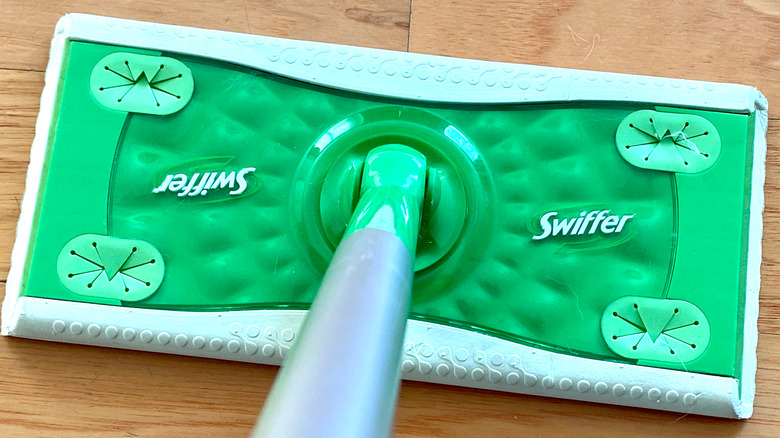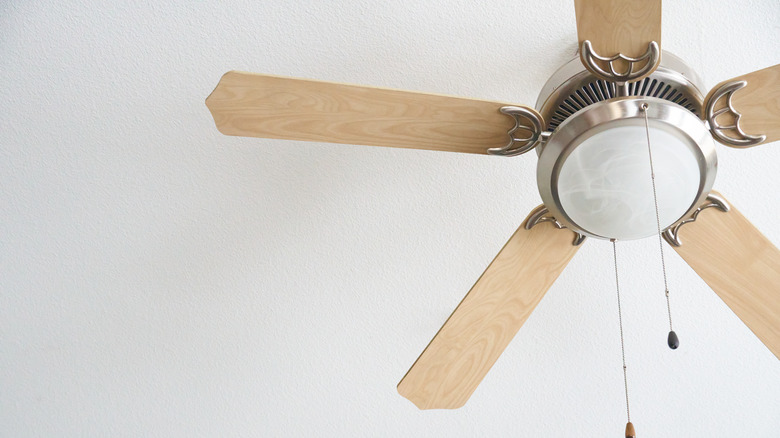The Most Important Place To Use A Swiffer That You're Probably Missing
It's no secret Swiffer has been replacing traditional mops and brooms for a long time now, but have you ever wondered why? Unlike regular mops, Swiffer has a unique microfiber cloth that gives it that incredible trapping power. Microfiber Wholesale states that most people choose microfiber cloths over cotton and other materials because of how well their tiny fibers trap dirt and dust. Additionally, because its microfiber towels are disposable, you don't need to worry about your Swiffer collecting bacteria, unlike typical mops and brooms.
According to Food52, your run-of-the-mill mop harbors harmful bacteria, which you're spreading all over your floors; but with Swiffer, that will never be an issue. Now, while Swiffer is great for picking up dirt and debris off your floor, there are several other places in your home you may not have thought about using this dry mop. Here is the most important place to use a Swiffer you're probably missing.
Ceiling fan
When was the last time you cleaned the blades of your ceiling fan? If you can't remember, this article is dedicated to you, especially if you live in a warmer climate. Today explains that the hotter the weather, the more frequent your ceiling fan runs, which means a cloud of large dust will collect often. You might think, "But how am I supposed to dust if I can't reach them?" Of course, you could grab a ladder, but you don't need the boost to perform this task — just your Swiffer.
Using a traditional feather duster will cause a giant dust storm in your room as it can't hold onto the debris it collects. As we mentioned earlier, microfiber cloths can trap dust, which means you won't feel like you're being rained on while cleaning your ceiling fan. Cleaning your fan blades with a Swiffer takes no more than a minute to complete, so why not take it for a spin?
The dangers of dust
Sure, dust is annoying, but it's also dangerous — especially if you have asthma or are extremely sensitive to dust and dander. When dust builds up, it can cause wheezing and irritate your eyes and throat. In extreme cases, dust buildup can lead to asthma attacks and bronchial infections, according to Sobieski Services. If the buildup isn't taken care of, it can result in long-term health issues for the homeowner. The best way to fix this problem is to regularly dust your ceiling fan, especially if you have allergies or dust sensitivity.
According to Today, you should be dusting your ceiling fan regularly. Once a week is traditional, but if you notice your allergies are more severe than usual, feel free to switch to twice a week. By using your Swiffer to clean your ceiling fan, you're preventing dust and allergens from spreading, Merry Maids states. So, the next time you reach for your broom, pick up the Swiffer instead.


